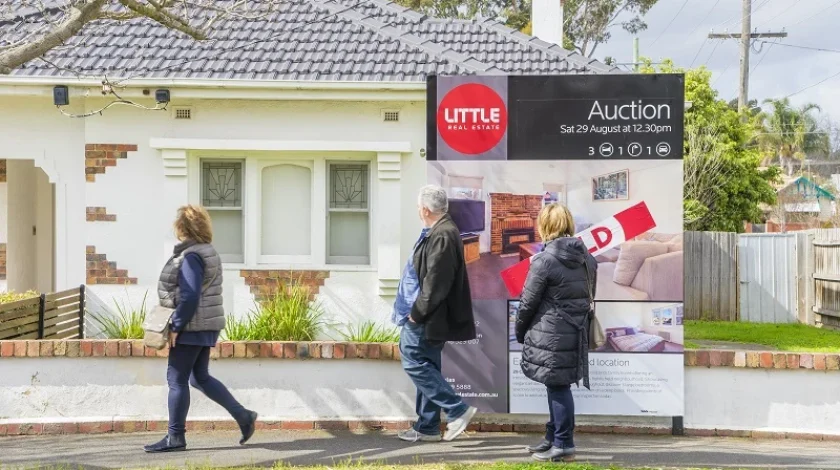Assisted by Maja Podinic & Bill Montgomery.
For those looking at retiring over the next five years, questions surrounding whether the Australian property market is stable enough to confidently invest one’s savings in are becoming more and more relevant.
The commonly held belief that banks are over-earning does now seem to be shared by the Financial Services Royal Commission (aka Banking Royal Commission), with Australia’s banks under serious scrutiny with regard to the tightening of their lending standards. There have already been many instances of Australia’s big banks feeling the heat of the Royal Commission, with the National Australia Bank (NAB) forking out over $310,000,000 to its customers in a big to address the impact of its poor advice.
With all of this in mind, the question still remains for stakeholders of all shapes and sizes: what is the significance of the Banking Royal Commission within the context of Australian property market?
The Banking Royal Commission’s interim report has indeed shed some light on what is to be expected, with Commissioner Hayne noting that regulators should be monitoring and enforcing existing policy more effectively, while lenders and brokers should be placing client interests ahead of profits (on top of this, the commission has been told that 90% of financial advisers providing advice to SMSFs ignored clients’ best interests).
Should this conservative approach to lending prevail, the Australian public may well begin to see further tightening of credit conditions, or as CLSA banking analyst Brian Johnson has suggested; “the most likely outcome from the royal commission is that we remove some of the ill-disciplined lending that we were seeing”.
According to founder of Metropole, Michael Yardney’s assessment of how the Royal Commission is set to effect property prices, this essentially means that “many potential borrowers are unable to get a new loan, others are waiting much longer to get their loans approved and many who can get loans are only able to borrow 60% or so of what they may have been able to borrow a few years ago”.
The Australian Prudential Regulation Authority (APRA) has made it clear that it expects banks to make more of an effort to reflect household living expenses and mortgage interest repayments in their lending calculations – a change which, whilst positive in the long run, will most likely create a tougher environment for first home buyers.
APRA’s chair, Mr Wayne Byres has publicly stated that the Royal Commission has suggested “…amongst other things, that regulators can and should do more to actively enforce standards of behaviour within the financial sector, and punish those who breach them”.
Amidst all this, chief economist Paul Dales has warned that house prices could fall as much as 12%, and that if this was to occur, it would be the longest and deepest housing downturn in at least three decades. Dales has also made the suggestion that if/when lending is tightened, the Australian public can expect to feel it over the following six to twelve months:
“There’s significant time delays with these things…I would have thought over the next six to twelve months is where we would, if there was going to be a big pullback in lending, that’s when we would see it and then, thereafter as and when the royal commission makes any recommendations and the Government implements them, the next six to 12 months after that.”
CoreLogic housing statistics have revealed that Sydney has already experienced a 6.1% fall in the past twelve months. With a shift this dramatic, the housing market will no doubt be a topic of hot debate during the upcoming federal election. This may not be the only talking point to follow closely, as earlier in the year, the opposition promised a reform of negative gearing and capital gains tax, despite the property downturn (they have proposed to limit negative gearing allowances to new homes and reduce the capital gains discount from 50% to 25%).
Given the consistently uncertain political climate in Canberra, the extent to which we can expect credit conditions to tighten will become dependent on the elected party. Whilst Commissioner Hayne has indeed provided a policy brief, he has left it to the politicians to design and uphold adequate financial services systems leading into the future.
Analysts have made the suggestion that the political parties will be unlikely take Commissioner Hayne’s report lightly, and will in fact push for tighter regulations, although the ABC has recently reported on suggestions that both the Reserve Bank of Australia and the Treasury have warned the government to be careful with regard to regulatory responses to the royal commission, as it is possible that harsh penalties may halt lending to home buyers and businesses, “which would not be great news for the economy”.
Should we see a Labor government come to power, some stakeholders have made the suggestion that their changes will have downward pressure on repayments, which can lead to:
- Property assets becoming less attractive to investors;
- First home owners and other parties who previously could not enter into the market being given more of an opportunity; and
- Drive investment into commercial and industrial property, which may have interesting consequences.
Similarly effected by the recent downturn in the Australian property market have been some off-the-plan apartment buyers. Buying off the plan has often been an attractive choice for buyers, as it provides both a property, as well as a window to save more money for the down payment, although with average prices dropping 2.7% nationally over the past twelve months, the environment has changed.
Now, Australia is seeing some off-the-plan buyers struggling to secure the purchase of their properties. According to conveyancer Alex Sapounas, some buyers are “struggling to seek finance and get the valuations according to what they purchased the property for”.
Mr Sapounas gives an example of one Western Sydney couple who had agreed to purchase a two bedroom apartment three or four years ago for $680,000, although when the bank valued the property on completion, it was no longer valued this highly, meaning that the bank refused to lend the couple as much as they needed. This resulted in the couple having to find an extra $54,000, on top of their deposit and stamp duty.
When combined with a smaller capacity for borrowing, this drop in the value of newly constructed properties can be seen as a double-whammy for some buyers – one which bestselling author Miriam Sandkuhler has compared to purchasing a new car, driving it out of the lot and having its value automatically depreciate by 20%.
In conclusion, and to attempt to answer the question of ‘what does the Banking Royal Commission mean for the Australian property market?’, it’s important to consider the fact that the wheels are still in motion, and that we are yet to see the final product, as it were. What we do know at this stage is that changes are already being made within the banking industry which are likely to significantly slow lending, which has accompanied a drop in the value of Australian property.
Independent economist Saul Eslake has suggested that this decline in property prices may not be as bad news as it is sometimes portrayed, commenting that:
“for those who own property it’s obviously not a good thing, but for the growing number of Australians who’ve been locked out of the property market over the last 25 years a decline in prices of the order of 10 to 20 per cent over a two or three year period, especially if happens without any significant increase in interest rates, could be the most promising thing that’s occurred for more than 25 years”.
If you have a query relating to any of the information in this article, or you would like to speak with a lawyer in Coleman Greig’s commercial property team with regard to your own property purchase, please don’t hesitate to get in touch.













